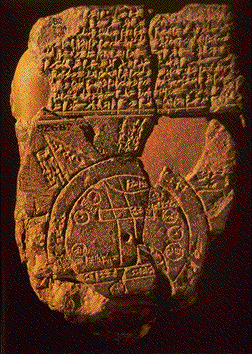Babylonian Mathematics

'Babylonian' is a general word to describe the people living in Mesopotamia, a fertile plain between the Tigris and Euphrates rivers (present day Turkey and Syria). The Babylonian civilisation (dating from around 2000-600BC) replaced that of the Sumerians and Akkadians, and so inherited their sexagesimal (i.e. base 60) number system. The Sumerians had created a form of writing based on cuneiform (wedge-shaped) symbols, which the Babylonians also adopted. This is how most of their texts have come down to us: as symbols written on wet clay tablets which were then baked in the hot sun so the clay set and the symbols were permanent. Thousands of these tablets have survived to the present day.
Babylonian mathematics was, in many ways, more advanced than Egyptian maths. They could extract square and cube roots, work with Pythagorean triples 1200 years before Pythagoras, had a knowledge of pi and possibly e (the exponential function), could solve some quadratics and even polynomials of degree 8, solved linear equations and could also deal with circular measurement. Babylonian mathematics was based much more on algebra and less on geometry, in contrast to the Greeks.
Babylonian Mathematics

0 Comments:
Post a Comment
<< Home